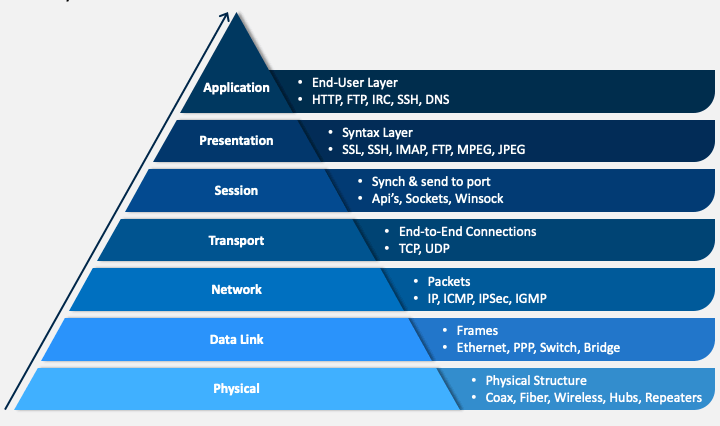The OSI (Open Systems Interconnection) model is a conceptual framework that describes how data is transmitted between devices over a network. It divides the complex process of network communication into seven distinct layers, each with a specific function. Understanding the OSI model is essential for anyone working in the field of networking or information technology.
Physical Layer
The physical layer is the bottom-most layer of the OSI model. It is responsible for the physical connection between devices, such as cables, switches, and network interface cards. The primary function of the physical layer is to transmit raw bits over a physical medium.
Data Link Layer
The data link layer is responsible for creating a reliable link between two directly connected nodes. It ensures error-free data transmission by using techniques such as framing, flow control, and error detection. Ethernet switches and wireless access points operate at this layer.
Network Layer
The network layer focuses on logical addressing and routing of data packets from the source to the destination across multiple networks. Routers operate at this layer, making decisions based on IP addresses to determine the best path for data transmission. Internet Protocol (IP) is a fundamental protocol of the network layer.
Transport Layer
The transport layer ensures end-to-end communication, providing error detection, data integrity, and end-to-end flow control. It establishes, maintains, and terminates connections between applications. Protocols like TCP (Transmission Control Protocol) and UDP (User Datagram Protocol) operate at this layer.
Session Layer
The session layer manages and controls the dialog between two devices, establishing, maintaining, and terminating sessions. It synchronizes data exchange and manages dialogue control, allowing devices to communicate over a network. This layer is essential for applications that require long-duration connections, like video conferencing and online gaming.
Presentation Layer
The presentation layer is responsible for data translation, encryption, and compression. It ensures that data sent from the application layer of one system is readable by the application layer of another system. This layer deals with issues like data format conversion, data encryption, and data compression, making the data usable for the application layer.
Application Layer
The topmost layer, the application layer, directly interacts with end-user applications. It provides network services directly to end-users or applications. Examples of application layer protocols include HTTP (Hypertext Transfer Protocol), FTP (File Transfer Protocol), and SMTP (Simple Mail Transfer Protocol).
Importance of Understanding the OSI Model
- Troubleshooting: When network problems arise, understanding the OSI layers can help you pinpoint the problem area, leading to faster and more efficient troubleshooting.
- Interoperability: Knowledge of the OSI model ensures that different network devices and technologies can work together seamlessly, promoting interoperability.
- Communication: It facilitates effective communication between IT professionals. When discussing network issues or implementations, referring to specific OSI layers ensures a common understanding among team members.
- Protocols and Applications: Understanding the OSI layers is vital for developing and implementing network protocols and applications. It helps developers choose the appropriate layer for their specific requirements.
Additional Notes
- The OSI model is a conceptual framework, not a physical implementation. strict adherence to the OSI model may not implement network devices and protocols
- The OSI model is often used as a teaching tool, but it is also a valuable reference for network professionals.
- There are other networking models, such as the TCP/IP model, but the OSI model is the most widely accepted and referenced model.
Conclusion
The OSI model provides a structured approach to understanding the complexities of network communication. By breaking down the process into seven distinct layers, it becomes easier to grasp the functions of different network components and technologies. Whether you are a networking professional, a developer, or simply a technology enthusiast, having a solid understanding of the OSI model is essential in today’s interconnected digital world.


